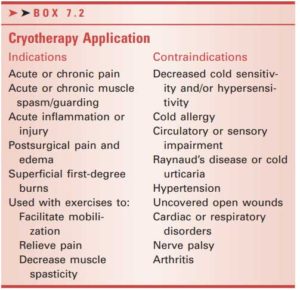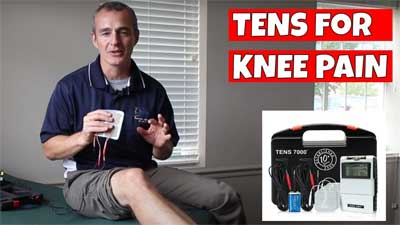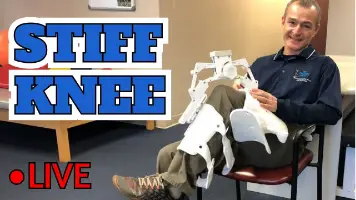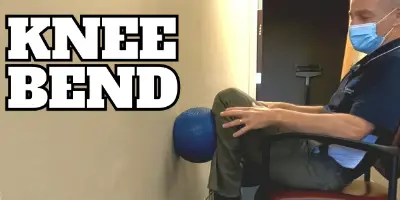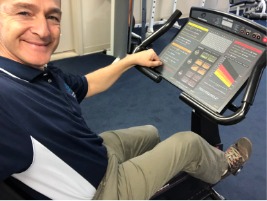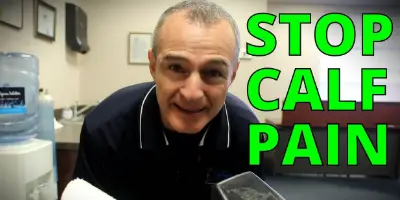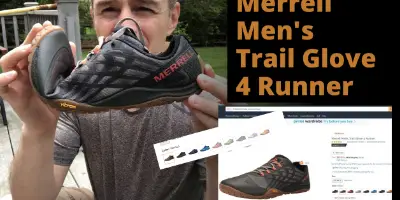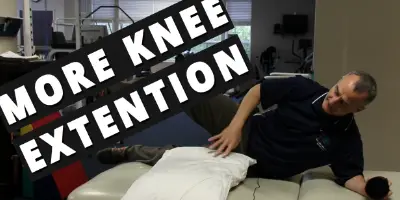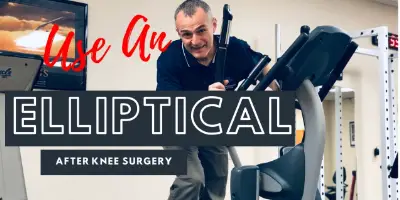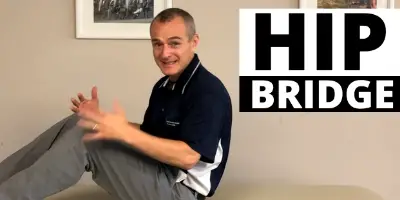How long should I ICE my knee after knee replacement?
Article Updated 06/08/2022
How long should I ice my knee after knee replacement surgery?
After a total knee replacement surgery many surgeons will often recommend icing the knee as often as possible.
In this article, I will review the current myths and misconceptions about using cryotherapy after knee replacement surgery and what is the number 1 reason to consider icing.
3 of the Most Common Myths Around Icing After Surgery:
- Icing reduces inflammation
- Icing reduces swelling
- Icing helps to heal injured tissue
3 Actual Truths Behind Icing After Surgery:
- Cold therapy will numb the superficial nerve endings which may reduce the experience of pain.
- Cold therapy provides a novel stimulus for the central nervous system and may interrupt the transmission of information being perceived as threatening.
- Cold therapy is inexpensive and easy to use at home. It is convenient and provides you with a sense of control which may help empower you to take control of your pain.
What does the research suggest?
A 2007 study determined that only an analgesic effect was demonstrated with continuous cooling. This study also determined that 4 degrees Celsius (39.2 degrees Fahrenheit) was determined to be comfortable for most patients. [1] A 2012 study analyzing the possible benefits of R.I.C.E. was inconclusive. [2]
How long should I place ice on my knee?
According to Therapeutic Modalities “Cryotherapy is usually applied for 20 to 30 minutes for maximum cooling of both superficial and deep tissues.” In many physical therapy clinics, the common recommendation is 10-minutes of sustained application. A couple of considerations to determine the length of time ice is placed on your post-surgical knee include
- How cold is the ice pack?
- Are you placing a piece of cloth or other covering between the ice and your skin?
- Are you applying ice to a part of the body with a thicker fatty tissue layer?
When should an ice pack be avoided?
The following table comes from Therapeutic Modalities section II page 168 –
Myth Buster #1 – Cryotherapy does not reduce inflammation.
Inflammation is a chemical process within the body and is largely regulated by the immune system. Placing an ice pack on the skin to change the skin’s temperature will not significantly impact the chemical response to tissue injury and repair known as inflammation.
Myth Buster #2 – Icing reduces swelling
Swelling and edema are also regulated by chemical changes at the site of injury. Changes in temperature applied to the skin can not significantly change the chemistry deep under the skin. If a noticeable change in swelling is noted upon removal of an ice pack it is largely due to the mechanical compression of the ice pack squeezing the fluid out of the area and not due to the cold temperature of the ice pack.
Myth Buster #3 – Icing improves healing.
Since the healing response is autoregulated by the body’s immune system, changes in superficial skin temperature have not been shown to significantly affect healing times. The best-known evidence of healing tissue following surgery includes a short episode of rest followed by an active recovery guided by a physical therapist, occupational therapist, or other qualified healthcare professional.
Summary:
Based on the available evidence, I would recommend using either cold therapy or heat therapy solely for an analgesic benefit. I would advise against taking time away from a more active recovery to sit with an ice pack or heating pad on your knee. If cold or warmth feels good and helps bring relief between bouts of activity these modalities are generally considered low risk for complications and inexpensive.
The bottom line is to do what feels good while you are resting, but stay active and keep moving when possible.
Facebook Group Comments
Another trick that helped me, was carrying an old fashion ice bag around and keeping ice on my knees all day even while going on excursions. Most restaurants and QT‘s gas station will let you fill up a cup and pour it into your ice bag. This bag CVS
Cited References:

Anthony Maritato, PT
Physical Therapist
Anthony Maritato, PT has been a licensed physical therapist and private practice owner since 2006. Ohio license #PT011602.
Anthony has been passionate about helping patients recover from total knee replacement surgery as well as rotator cuff repair surgery.
About the Author -
Anthony Maritato, PT has been a licensed physical therapist since 2006. He specializes in post surgical care and rehabilitation of total knee replacement and rotator cuff repair surgery.
Mr. Maritato is also nationally recognized as a therapist educator teaching courses related to Medicare reimbursement, contracting, and documentation.
Total Therapy Solutions LLC is Tony's primary practice which he owns with his wife Kathy who is also a licensed physical therapist.
More Blog Posts …
Can you use a TENS unit after knee replacement?
A TENS unit is safe to use after a total knee replacement. It is commonly used during knee flexion and extension exercises. Using TENS to reduce pain during knee replacement exercises may improve range of motion without the need for more medication.
How To Stretch A Stiff Knee After Knee Replacement
Stretching a stiff knee at home requires patience and time. Research suggests a long duration low intensity stretch will produce the greatest benefits in knee range of motion. In this post I will discuss using a Joint Active Systems and static progressive stretch technique to improve knee flexion at home.
Knee Replacement Bending Flexion Exercises at Home
Knee bend, also known as knee flexion, exercises may be performed immediately following knee replacement surgery. This videos shows several examples of knee flexion exercises to be performed at home. 120 degrees of knee flexion is considered normal range of motion following surgery.
Can I Run After Knee Replacement
Conventional advice is to avoid high impact activities after a total knee replacement. This would include running, jogging, and other high impact sports. The concern is the increased wear and tear on the new knee will cause it to wear out sooner or possibly even...
How soon after knee replacement can I use exercise bike?
It is commonly recommended to start using an exercise bike within the first 48-hours following a knee replacement. Standard practice in physical therapy is to begin the bike with a gentle rocking motion until the knee is capable of a completing full rotation without significant pain.
Calf Pain After Knee Replacement
Calf pain can happen for many reasons, but after surgery the most common reason is weakness, swelling, and change in activity levels. These exercises will help improve calf mobility, increase strength, and condition the calf to handle the workload associated with normal walking.
Please check with your physical therapist or doctor before performing these exercises.
Minimalist Running Shoe Review Unboxing Merrell Men’s Trail Glove 4 Runner
The Merrell Men’s Trail Glove 4 Runner has been a great show. I am updating this description today January 1, 2020. I have worn the shoe for work in the clinic as a physical therapist as well as the occasional run. It is ideal for a medium or narrow foot. I absolutely would not recommend it for a wide foot or a foot that will swell over the day.
Best Tip To Improve Knee Extension- Prone Hangs
Improve knee extension with this simple and effective exercise! Total knee replacement | ACL reconstruction | Knee Surgery
Using an Elliptical Trainer After Total Knee Replacement Surgery
Using and choosing an elliptical trainer after total knee replacement surgery or any other knee surgery can be challenging. There are so many different brands available on the market. In this video I will show you how to safely get on, off, and use the elliptical trainer whether you are using one at home, at the gym, or in your physical therapy clinic.
3 Versions of a Hip Bridge for Total Knee Replacement Therapy At Home
The hip bridge is a very common exercise following total knee replacement, but doing it correctly isn’t as common. There are three version of the hip bridge and in this video I share information about all three.
